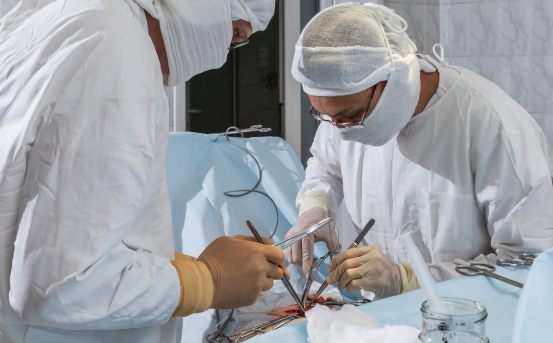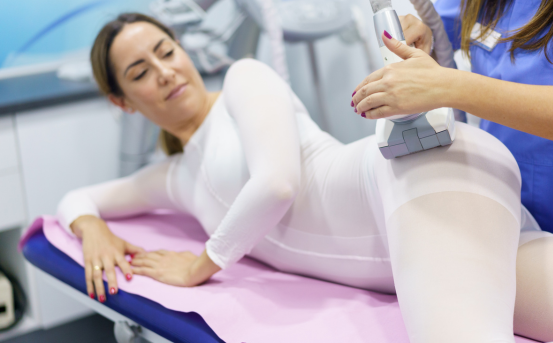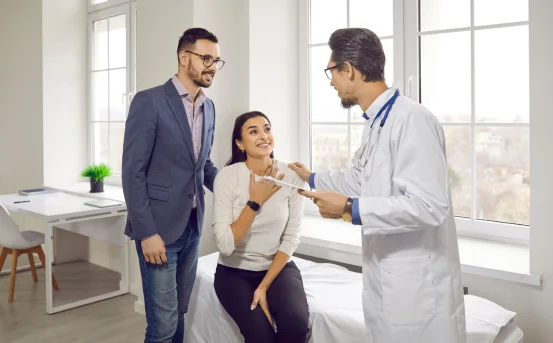Inguinal hernia repair surgery is one of the most common types of hernia that affects millions of people globally, especially men. It occurs when a portion of the intestine or fatty tissue pushes through a weak spot in the lower abdominal wall, often in the inguinal canal. Though not always dangerous, an inguinal hernia doesn’t heal on its own and may require surgical treatment if symptoms worsen.
Living with an inguinal hernia can interfere with daily life, making simple activities like walking, bending, or even laughing uncomfortable. While some individuals may manage mild hernias with lifestyle changes and monitoring, surgical repair is often the only permanent solution. With advances in modern surgical techniques including minimally invasive laparoscopic procedures Inguinal hernia has become safer, quicker, and more effective than ever before.
What Is an Inguinal Hernia repair surgery?
An inguinal hernia occurs in the groin area when tissue, such as part of the intestine, bulges through a weak spot in the abdominal muscles. This type of hernia is more prevalent in men than in women due to natural differences in anatomy. Inguinal hernias can be direct or indirect, depending on the location and cause of the defect.
-
Direct Inguinal Hernia :- Occurs through a weakness in the abdominal wall, typically developing over time.
-
Indirect Inguinal Hernia :- Usually congenital and occurs when the inguinal canal fails to close completely before birth.
Common Causes of Inguinal Hernia
Understanding the root causes can help prevent the condition or detect it early. Some of the most common causes of inguinal hernia include :-
- Congenital Defects :- Many inguinal hernias are present at birth due to a defect in the abdominal wall that fails to close properly during fetal development.
- Straining During Bowel Movements or Urination :- Chronic constipation or urinary issues can increase intra-abdominal pressure, leading to a hernia.
- Heavy Lifting :- Frequent or improper lifting of heavy objects can strain the abdominal muscles, increasing the risk of hernia.
- Chronic Cough or Sneezing :- Conditions like chronic bronchitis or allergies that cause repeated coughing or sneezing can weaken the abdominal wall.
- Obesity :- Being overweight puts extra pressure on the abdominal muscles, contributing to the development of a hernia.
- Aging :- As you age, muscles naturally lose strength and elasticity, making older adults more prone to hernias.
Symptoms of Inguinal Hernia
Some small inguinal hernias may not cause noticeable symptoms. However, when symptoms do appear, they commonly include :-
-
A visible bulge in the groin or scrotum area, especially when standing or coughing
-
Pain or discomfort, particularly when bending over, lifting, or coughing
-
A burning or aching sensation at the bulge site
-
Weakness or pressure in the groin
-
In severe cases, nausea, vomiting, and inability to pass gas or stool, which may indicate a strangulated hernia (a medical emergency)
If you experience severe pain, redness, or tenderness at the hernia site, seek immediate medical attention.
Diagnosis of Inguinal Hernia
A physical examination by a doctor is usually sufficient to diagnose an inguinal hernia. The doctor may ask you to stand, cough, or strain to check for a visible bulge. In certain cases, imaging tests like ultrasound, CT scan, or MRI may be used to confirm the diagnosis or rule out other conditions.
Treatment Options for Inguinal Hernia
An inguinal hernia does not improve on its own and often gets larger or more painful over time. The only definitive treatment is inguinal hernia repair surgery. There are both non-surgical and surgical options, depending on the severity and symptoms.
Watchful Waiting
For small, painless hernias that don’t interfere with daily life, doctors may recommend watchful waiting. Regular monitoring ensures the hernia doesn’t grow or become strangulated.
However, if symptoms worsen, surgical repair becomes necessary.
Inguinal Hernia Repair Surgery: Treatment and Techniques
Surgery is the most effective and permanent treatment for an inguinal hernia. The goal is to return the displaced tissue to its proper place and repair the weakened abdominal wall.
There are two main types of inguinal hernia repair surgery :
Open Hernia Repair (Herniorrhaphy or Hernioplasty)
In this traditional approach :-
-
The surgeon makes an incision in the groin area.
-
The bulging tissue is pushed back into the abdomen.
-
The weakened muscle wall is stitched and often reinforced with surgical mesh (hernioplasty) to prevent recurrence.
Advantages :-
-
Suitable for larger hernias.
-
Performed under local, spinal, or general anesthesia.
Disadvantages :-
-
Longer recovery time compared to minimally invasive surgery.
-
May cause more post-operative pain.
Laparoscopic Hernia Repair (Minimally Invasive Surgery)
In this technique :-
-
Several small incisions are made in the abdomen.
-
A laparoscope (a thin tube with a camera) guides the surgeon.
-
Surgical mesh is placed to reinforce the area.
Advantages :-
-
Less post-operative pain.
-
Shorter recovery time.
-
Minimal scarring.
-
Quicker return to normal activities.
Disadvantages :-
-
Requires general anesthesia.
-
May not be suitable for very large or strangulated hernias.
Recovery After Inguinal Hernia Repair
Recovery times vary depending on the surgical method and individual health factors. Generally :-
-
Open surgery :- Most patients can return to light activities within 2–3 weeks and resume normal activities in about 4–6 weeks.
-
Laparoscopic surgery :- Patients typically return to normal life within 1–2 weeks.
Tips for a smoother recovery :-
-
Follow post-op instructions carefully.
-
Avoid heavy lifting or strenuous activity for at least a few weeks.
-
Keep the surgical area clean and dry.
-
Take prescribed medications to manage pain or prevent infection.
-
Attend follow-up appointments to ensure proper healing.
Potential Complications of Inguinal Hernia Surgery
While inguinal hernia surgery is generally safe, some possible complications include :-
-
Infection at the surgical site
-
Bleeding or hematoma
-
Nerve injury causing numbness or chronic pain
-
Recurrence of the hernia
-
Adverse reactions to anesthesia
-
Urinary retention
Discuss all potential risks and benefits with your surgeon before undergoing hernia repair.
When to Seek Medical Help
If you notice any of the following symptoms after surgery, contact your healthcare provider immediately :-
-
High fever
-
Persistent redness, swelling, or drainage from the incision site
-
Severe pain not relieved by medication
-
Nausea, vomiting, or difficulty urinating
Prompt attention can help avoid complications and support faster recovery.
Preventing Inguinal Hernia
While not all hernias can be prevented, the following tips can reduce your risk :-
-
Maintain a healthy weight
-
Avoid straining during bowel movements by treating constipation
-
Use proper lifting techniques
-
Quit smoking, as chronic coughing weakens the abdominal wall
-
Exercise regularly to strengthen abdominal muscles
Conclusion
An inguinal hernia can be uncomfortable and disruptive, but the good news is that effective surgical treatment options are available. Whether you opt for open surgery or a minimally invasive approach, timely intervention can prevent complications and significantly improve your quality of life.























